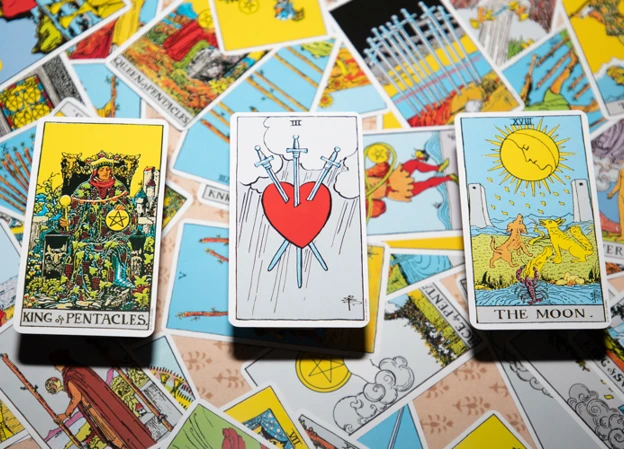When it comes to Tarot readings, one aspect that captivates both beginners and experienced practitioners alike is the placement of dream cards in a spread. Dream cards hold a special significance, as they provide insights into our subconscious mind and reveal hidden truths. Understanding the placement of these cards in a Tarot spread is crucial for accurate and profound interpretations. In this article, we will delve into the intricate world of dream card placement, exploring the meaning of dream cards, analyzing their placement in a spread, discussing the factors that affect their placement, understanding dream card combinations, and providing tips for enhancing dream card analysis. By the end of this article, you will be equipped with the knowledge and tools to unravel the mysteries of dream cards and interpret them with confidence and clarity.
Contents
- Meaning of Dream Cards
- Analyzing Placement in a Tarot Spread
- Factors Affecting Dream Card Placement
- Understanding Dream Card Combinations
- How to Interpret Dream Card Placement
- Tips for Enhancing Dream Card Analysis
- Conclusion
-
Frequently Asked Questions
- 1. What are dream cards in Tarot?
- 2. How do dream cards differ from other Tarot cards?
- 3. Why are dream cards important in Tarot readings?
- 4. How do dream cards affect the interpretation of a Tarot spread?
- 5. Can dream cards have different meanings based on their placement in a spread?
- 6. What factors should be considered when analyzing dream card placement?
- 7. Are there any specific combinations of dream cards to watch for?
- 8. Can dream cards have contradictory meanings in a spread?
- 9. How can I enhance my analysis of dream card placement?
- 10. Are there any resources available to help with dream card interpretation?
- References
Meaning of Dream Cards
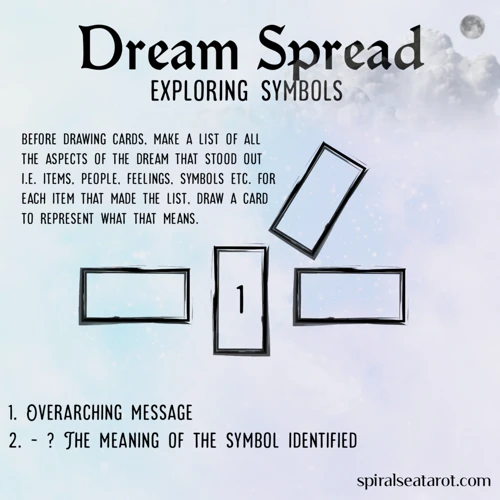
Dream cards in the Tarot deck hold a symbolic meaning that goes beyond the conscious realm. Dream cards are often characterized by vivid imagery and enchanting symbolism that tap into our subconscious mind. They offer glimpses into our hopes, fears, and desires, providing valuable insights for personal growth and self-discovery. These cards can represent various aspects of our lives, including emotions, relationships, spirituality, and personal journeys. Each dream card carries its own unique message and interpretation, allowing us to explore the depths of our psyche. Whether it’s a card depicting a mysterious labyrinth or a celestial star, the meaning of dream cards holds profound significance in deciphering the messages from our innermost dreams and desires. Understanding the symbolism behind dream cards can help us gain a deeper understanding of our own consciousness, enabling us to connect with our intuition and gain valuable guidance in our Tarot readings. To further explore the significance of dream cards in Tarot readings, check out our article on dream card interpretation tips.
1. Definition of Dream Cards
A key aspect in understanding dream cards is grasping their specific definition. Dream cards, within the context of Tarot readings, are a subset of cards that hold symbolic meanings related to the realm of dreams, subconscious, and inner desires. These cards often feature imagery that represents themes like fantasy, mysticism, and the ethereal. While dream cards can vary depending on the specific Tarot deck being used, they typically include cards that depict dream-like scenes, such as celestial beings, enchanting landscapes, and surreal symbols. Each dream card carries its own distinct message and interpretation, providing valuable insights into the hidden aspects of our psyche. When encountering dream cards in a Tarot reading, it is important to approach them with an open mind and tap into the intuitive and imaginative aspects of our consciousness. By recognizing and exploring the significance of these dream cards, we can unlock a deeper understanding of our dreams, desires, and subconscious motivations. For more guidance on interpreting recurring symbols in dream cards, refer to our article on interpreting recurring symbols in dream cards.
2. Significance in Tarot Readings
The significance of dream cards in Tarot readings cannot be overstated. These cards delve deep into the realm of our subconscious mind, giving us access to hidden thoughts, desires, and emotions. When dream cards appear in a reading, they act as portals to our dreamscape, unlocking valuable insights and messages from our inner selves. Each dream card carries its own unique symbolism and meaning, allowing the reader to tap into the client’s deepest aspirations and fears. Whether it’s the enchanting imagery of the Moon card or the transformative power of the Death card, dream cards provide a direct connection to our subconscious desires and fears. These cards often represent the essence of our dreams, whether they are related to personal growth, relationships, or spiritual journeys. Incorporating dream cards into a Tarot reading adds depth and dimension to the interpretation, allowing the reader to access deeper layers of the client’s psyche and provide more accurate and profound insights. To learn more about how to incorporate dream cards into your Tarot practice, check out our article on how to incorporate dream cards in Tarot.
Analyzing Placement in a Tarot Spread
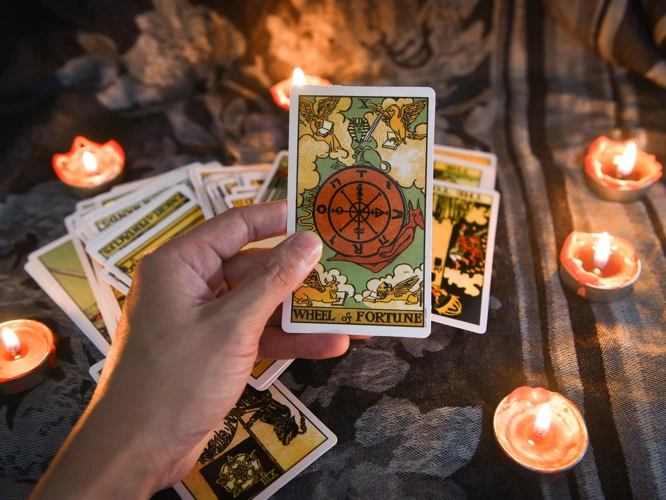
The placement of dream cards in a Tarot spread plays a vital role in deciphering their meaning and understanding their influence within a reading. Analyzing the placement involves examining two key aspects: the layout of the Tarot spread and the interpretation based on that placement. The layout of the Tarot spread determines the positions of the cards and their corresponding meanings. Each position in the spread represents a specific aspect of the question or situation being explored. The interpretation based on placement involves considering how the dream cards interact with the surrounding cards and the position they occupy. For example, a dream card placed in a prominent position may indicate a strong influence on the querent’s life, while a dream card surrounded by supportive cards may suggest a positive manifestation of the dream’s symbolism. To illustrate these concepts further, examples of dream card placements can provide a deeper understanding of how the position of dream cards can shape the overall interpretation of a Tarot reading.
1. Layout of Tarot Spread
The layout of a Tarot spread plays a crucial role in analyzing the placement of dream cards. It provides the framework for interpreting the cards and understanding their relationship to one another. There are several popular layouts that Tarot readers use, such as the Celtic Cross, the Three-Card Spread, or the Four-Card Spread. The Celtic Cross spread, for example, consists of ten positions, each representing different aspects of the querent’s life. The first position represents the present situation, while the fourth position signifies the foundation or the root cause of the issue at hand. The seventh position represents the querent’s fears or desires, while the tenth position offers insights into the most likely outcome or potential future.
In the Three-Card Spread, the reader lays out three cards representing the past, present, and future respectively. The position of the dream card can provide valuable clues about how the dreams and subconscious mind are influencing each aspect of the querent’s journey.
The Four-Card Spread offers a more concise snapshot of the present situation, challenges, advice, and potential outcome. The placement of the dream card within this spread can reveal how the dream symbolism aligns with each of these aspects.
By understanding the layout of the Tarot spread, readers can determine the significance of dream cards relative to the specific position and its corresponding meaning. This allows for a more nuanced interpretation that takes into account the context and relationship between the dream card and other cards in the spread. It is important to note that while different spreads have their own unique layouts, the underlying principle remains the same: to provide structure and guidance for interpreting the placement of dream cards in a Tarot reading.
2. Interpretation Based on Placement
When analyzing the placement of dream cards in a Tarot spread, the position of each card holds significant meaning and can help guide interpretation. Here, we will explore how to interpret dream cards based on their placement:
1. Position in the Spread: The position of a dream card within the Tarot spread can provide insights into its significance. For example, if a dream card appears in the “past” position, it may indicate that the dream or desire represented by the card has been influencing the querent for some time. On the other hand, if it appears in the “future” position, it may suggest that the dream or desire is yet to be realized.
2. Adjacent Cards: Pay attention to the cards that surround the dream card in the spread. These neighboring cards can influence the interpretation and provide additional context. For instance, if a dream card is surrounded by cards representing conflict or obstacles, it may indicate challenges or resistance in manifesting the dream. Conversely, if surrounded by cards symbolizing abundance or positive growth, it may suggest that the dream is on the verge of coming true.
3. Card Relationships: Analyzing the relationships between dream cards and other cards in the spread can offer deeper insights. Look for patterns, similarities, or contradictions between the dream card and other cards present. For example, if a dream card appears alongside cards that represent emotional fulfillment, it may suggest that the dream is closely tied to the querent’s emotional well-being.
4. Reversed vs. Upright: Consider whether the dream card appears in a reversed or upright position. Reversed cards often indicate blocked energy or challenges, whereas upright cards represent openness and flow. The orientation of the dream card can modify the interpretation and shed light on the current state of the querent’s dream or desire.
By taking these factors into account and analyzing the placement of dream cards in the Tarot spread, readers can uncover deeper meanings and offer more nuanced interpretations for their clients. Each card’s position, relationship with neighboring cards, and its orientation provide valuable clues for understanding the querent’s dreams, desires, and spiritual journey.
3. Examples of Dream Card Placements
Dream cards can appear in various positions within a Tarot spread, each carrying its own unique significance and influence on the overall reading. Here are a few examples of dream card placements and their possible interpretations:
a) Dream Card as the Key Card: When a dream card appears as the central card in a spread, it holds immense importance and acts as the focal point of the reading. This placement suggests that the message of the dream card is central to the querent’s current situation or inquiry. Its interpretation will significantly shape the overall reading, providing key insights into the querent’s subconscious desires, fears, or inner conflicts.
b) Dream Card as an Obstacle: Sometimes, a dream card may appear in a position that represents challenges, obstacles, or blockages. This placement indicates that the querent may be facing internal or external barriers that need to be addressed. The interpretation of the dream card in this position can provide guidance on how to overcome these obstacles and move forward towards achieving their goals or aspirations.
c) Dream Card in a Relationship Spread: In relationship spreads, the appearance of a dream card can indicate significant themes or dynamics within a romantic relationship or partnership. For example, the appearance of the “Lovers” as a dream card may suggest a strong bond and connection between two individuals, while the appearance of the “Tower” may symbolize upheaval and transformation in the relationship. The placement of dream cards in relationship spreads can offer valuable insights into the emotions, desires, and challenges within the partnership.
d) Dream Card as a Final Outcome: When a dream card appears as the final card in a spread, it often represents the potential outcome or resolution of the situation being explored. This placement suggests that the querent’s dreams, desires, or subconscious beliefs will shape the ultimate outcome. Interpreting the dream card in this position can shed light on the long-term implications of the querent’s actions or decisions.
These are just a few examples of how dream cards can be positioned within a Tarot spread. The interpretation of these placements relies on the specific spread used, the surrounding cards, and the querent’s unique circumstances. It is essential to consider the overall context of the reading while analyzing dream card placements to provide a comprehensive and accurate interpretation.
Factors Affecting Dream Card Placement
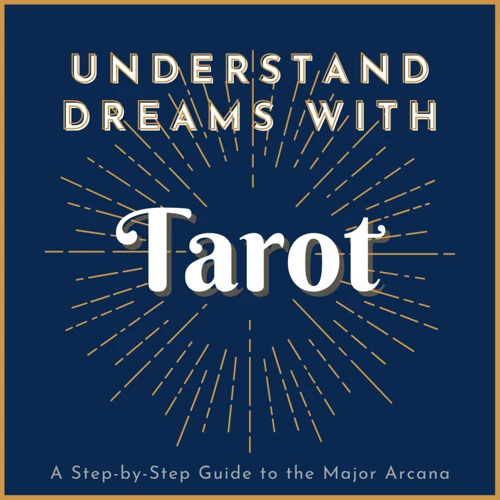
In Tarot readings, the placement of dream cards in a spread is influenced by several factors that lend depth and nuance to their interpretation. Firstly, card proximity plays a crucial role in determining the influence and interaction between dream cards and other cards in the spread. Cards that are placed next to dream cards can amplify or modify their meanings, creating a dynamic interplay of energies. Secondly, card positions within the spread also impact the significance of dream cards. For example, a dream card in the past position may signify unresolved issues from the past that are influencing the present situation. Conversely, a dream card in the future position may suggest upcoming opportunities or challenges to look out for. Finally, the reversed vs. upright orientation of dream cards adds another layer of interpretation. Reversed dream cards can indicate blocked emotions, hidden truths, or delays, while upright dream cards signify the full expression of their symbolic meanings. Considering these factors when analyzing dream card placement is essential to unraveling the intricate tapestry of meanings they hold in a Tarot reading.
1. Card Proximity
When analyzing dream card placement in a Tarot spread, one important factor to consider is the proximity of the cards to each other. The card proximity refers to the position of the dream card in relation to the other cards surrounding it. This can provide valuable insights into the overall meaning and significance of the dream card within the reading.
To understand the impact of card proximity, consider the following scenarios:
- If the dream card is positioned in close proximity to cards that represent positive energies or desired outcomes, it may indicate that the dream is aligned with your aspirations and has the potential to manifest in a favorable way. This proximity suggests that positive energies are closely connected to your dreams and may offer support and encouragement.
- On the other hand, if the dream card is positioned close to cards with negative connotations or obstacles, it can suggest that there may be challenges or barriers in realizing your dreams. This proximity implies that there may be external or internal factors that need to be addressed or overcome in order to achieve the desired outcome.
- In some cases, the dream card may be positioned equidistant from both positive and negative cards. This proximity suggests a delicate balance between conflicting energies or forces. It may indicate that there are both supportive and challenging aspects to consider when it comes to your dream. The interpretation here lies in understanding the interplay between these opposing energies and finding harmony or resolution.
In essence, card proximity serves as a visual representation of the relationships and dynamics between the dream card and the surrounding cards. It can help provide a contextual understanding of how the dream card interacts with the other elements of the reading. By paying attention to card proximity, you can gain deeper insights into the nuances and complexities of your dreams and their potential outcomes.
2. Card Positions
In the realm of Tarot readings, the placement of cards within a spread is of utmost importance, for it can greatly influence the interpretation and meaning of each card, including dream cards. When analyzing dream card placement, the specific positions they occupy within the spread offer insightful clues and nuances to consider. The position of a dream card can indicate its role within the reading, whether it represents the past, present, or future, or reflects aspects of our inner world, relationships, or external circumstances. For example, if a dream card appears in a position representing the past, it could signify memories, experiences, or previous influences that have shaped the current situation. Similarly, if it appears in a position representing the future, it may foreshadow upcoming events or offer guidance on potential outcomes. Additionally, the proximity of dream cards to other cards in the spread can also provide valuable insights. If a dream card is adjacent to a card depicting conflict or struggle, it may indicate unresolved issues or the need to confront certain challenges. On the other hand, if it is located near cards representing abundance or fulfillment, it could point towards positive transformations or a period of growth. Consider the surrounding cards and how they interact with the dream card to gain a deeper understanding of its significance within the reading. By attentively observing the card positions and their relationship to one another, you can unlock a wealth of information and uncover the intricate layers of meaning embedded within dream card placements.
3. Reversed vs. Upright
When analyzing the placement of dream cards in a Tarot spread, one important factor to consider is whether the card appears in a reversed or upright position. The orientation of the card significantly influences its interpretation and the overall message it conveys.
Reversed Dream Cards:
When a dream card appears in a reversed position, it suggests that the energy or meaning associated with the card is blocked, disrupted, or in an imbalanced state. This can indicate challenges, obstacles, or unresolved issues related to the card’s symbolism. The appearance of a reversed dream card prompts the reader to delve deeper into the unconscious realms, to explore hidden emotions, fears, or limiting beliefs that may be hindering the manifestation of the card’s positive aspects. It serves as a gentle nudge to address and release these blockages in order to move forward on one’s spiritual journey.
Upright Dream Cards:
On the other hand, when a dream card appears in an upright position, it signifies that the energy of the card is flowing freely and the card’s message is expressed without hindrance. Upright dream cards often represent positive aspects, opportunities, or favorable circumstances in the querent’s life. They indicate that the themes and symbols associated with the card are present and active, guiding the querent towards growth, fulfillment, and alignment with their higher purpose.
In some cases, the reversed or upright position of a dream card can alter its traditional meaning, adding nuances or emphasizing certain aspects of its interpretation. It is important for the Tarot reader to take note of the card’s position and consider its implications within the context of the spread and the overall reading.
Understanding the distinction between reversed and upright dream cards allows for a more comprehensive and nuanced analysis of the Tarot spread, providing valuable insights into the querent’s subconscious mind and offering guidance for navigating life’s challenges and opportunities.
Understanding Dream Card Combinations

Understanding dream card combinations in a Tarot spread adds an extra layer of depth and complexity to the interpretation process. When multiple dream cards appear together, their synergy can provide a richer and more nuanced message. Some dream cards may complement each other, reinforcing a particular theme or aspect of the reading. For example, if the Moon and the Star cards appear side by side, it may indicate a strong sense of intuition and spiritual guidance. On the other hand, dream card combinations can also reveal contradictory meanings. It is important to carefully analyze how these cards interact with each other and consider their individual interpretations within the context of the reading. By examining the interplay between dream cards, readers can gain deeper insights into the complexities of the querent’s situation and offer more accurate guidance. Taking the time to understand and interpret dream card combinations can greatly enhance the depth and accuracy of a Tarot reading.
1. Synergy between Dream Cards
When analyzing the placement of dream cards in a Tarot spread, it is important to consider the synergy and interactions between these cards. The synergy between dream cards refers to the way they harmonize and complement each other within the context of the reading. Each dream card holds its own unique energy and symbolism, and when multiple dream cards appear together in a spread, their combined meanings can deepen and expand.
To decipher the synergy between dream cards, pay attention to the relationships and connections that emerge. Look for common themes, symbols, or colors that appear in the cards. These shared elements can reveal hidden meaning and provide insights into the overall message being conveyed. For example, if two dream cards featuring water symbolism appear in close proximity, it could indicate a need for emotional healing or a focus on intuition and introspection. Conversely, if a dream card associated with fire is surrounded by cards depicting action and movement, it may indicate a period of passion and forward momentum.
It is also important to consider the contrast and balance between dream cards in a spread. Sometimes, dream cards with contradictory meanings can appear together, creating a tension or conflict within the reading. In such cases, it is crucial to interpret the opposing energies and explore how they can be reconciled or balanced. This can provide valuable insights into the challenges and opportunities present in the querent’s life.
Interpreting the synergy between dream cards requires a holistic approach, taking into account the entire spread as well as the individual meanings of each card. The combination of dream cards can provide a more nuanced and intricate understanding of the querent’s situation, allowing for a more detailed and accurate interpretation. By carefully examining the relationships, themes, and contrasts between dream cards, the reader can uncover hidden layers of meaning and provide deeper insights and guidance to the querent.
2. Contradictory Meanings
When analyzing dream card combinations in a Tarot spread, it is important to also consider contradictory meanings that may arise. While some cards may align harmoniously, others may present conflicting interpretations. This can occur when dream cards with contrasting symbolism or messages are placed in close proximity to each other. When faced with contradictory meanings, it is crucial to approach the interpretation with an open mind and consider the surrounding cards and the overall context of the reading. The key to navigating contradictory meanings lies in finding a balance between the opposing energies and understanding the underlying lessons or choices that are being presented. It is essential to explore the possible resolutions or middle ground between these conflicting interpretations. By embracing the complexity of contradictory meanings, we can gain deeper insights into the intricacies of our situations and discover new perspectives that may not have initially been apparent. This allows for a more nuanced and comprehensive understanding of the messages conveyed by dream cards in a Tarot spread.
How to Interpret Dream Card Placement
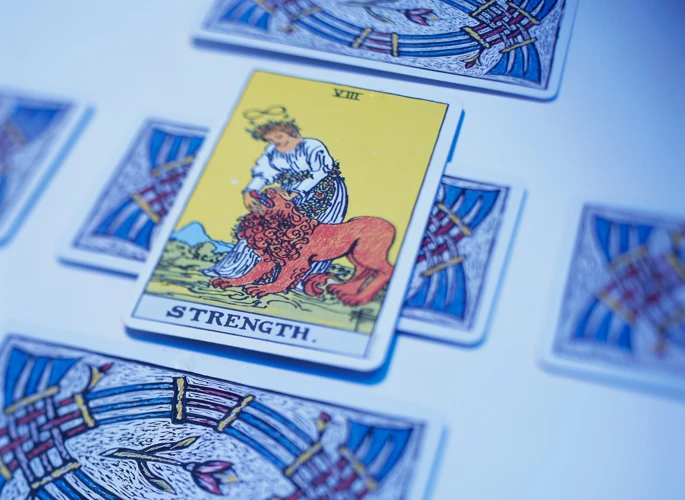
Interpreting dream card placement in a Tarot spread is a skill that requires a deep understanding of the Tarot deck and the specific meanings associated with each card. Here are some key steps to help you effectively interpret dream card placement:
1. Observe Card Positions: Take note of where the dream card appears in the spread. Is it in the past, present, or future position? Is it in a central position, indicating a significant influence? Understanding the position of the dream card can provide valuable insights into its meaning and its impact on the overall reading.
2. Consider Card Proximity: Analyze the cards surrounding the dream card. Do they complement or contradict its meaning? Pay attention to any patterns or themes that emerge. The cards in proximity to the dream card can provide additional context and elaborate on the message it conveys.
3. Reflect on Card Relationships: Look for connections and relationships between the dream card and other cards in the spread. Are there any major arcana cards that share similar themes or symbolism? Are there any court cards that can represent individuals relevant to the dream card’s interpretation? Exploring these relationships can shed light on the significance of the dream card’s placement.
4. Consider Reversed vs. Upright: Take into account whether the dream card appears in a reversed or upright position. Reversed cards often indicate a reversed or blocked energy associated with the card’s meaning. This can add an extra layer of complexity to the interpretation of dream card placement.
5. Trust Intuition: While it is important to have a solid knowledge of the Tarot card meanings and spreads, don’t underestimate the power of your intuition. Pay attention to any immediate feelings, impressions, or thoughts that arise when you see the dream card in its placement. Your intuition can provide valuable insights and guidance in interpreting dream card placement.
Remember, interpreting dream card placement is a combination of analyzing card positions, considering card proximity, reflecting on card relationships, and trusting your intuition. By honing your skills and engaging with the symbolism of dream cards, you can unlock deeper meanings and gain a clearer understanding of the messages they convey.
Tips for Enhancing Dream Card Analysis
When it comes to analyzing dream cards in a Tarot spread, there are several tips and techniques that can enhance your interpretation and provide a deeper understanding of the messages they convey. Here are some valuable insights to help you enhance your dream card analysis:
1. Trust your intuition: While it is essential to have a foundational knowledge of Tarot symbolism, it is equally important to trust your intuition when interpreting dream cards. Allow your intuition to guide you as you connect with the imagery, symbols, and emotions evoked by the cards.
2. Consider card combinations: Pay attention to the other cards present in the spread and how they interact with the dream cards. Look for patterns, relationships, and connections between the cards. The combination of dream cards with other cards can provide deeper layers of meaning and reveal insightful messages.
3. Journal your insights: Keeping a Tarot journal can be immensely helpful in documenting your interpretations and insights regarding dream cards. Regularly writing about your readings can aid in developing your understanding of dream card symbolism and help you notice recurring themes or motifs.
4. Utilize meditation and visualization: Before diving into your interpretation, take a moment to quiet your mind through meditation. Visualize yourself stepping into the imagery of the dream cards and allow the symbols to come alive in your mind’s eye. This practice can help you establish a deeper connection with the cards and access subtle messages.
5. Seek assistance from dream interpretation: Dreams often contain symbols and themes that relate to our waking life. Consider utilizing the principles of dream interpretation and analyzing recurring symbols that may appear in your dreams alongside the dream cards. This cross-referencing can provide additional insights and broaden your understanding of the cards’ meanings. For more guidance on interpreting recurring symbols, check out our article on interpreting recurring symbols in dream cards.
Remember, consistent practice and reflection are key to enhancing your dream card analysis skills. As you gain experience and develop a personal connection with the cards, you will uncover unique insights and interpretations that will deepen your Tarot readings. Stay open-minded, trust your intuition, and allow the dream cards to guide you on a profound journey of self-discovery and enlightenment.
Conclusion
In conclusion, analyzing the placement of dream cards in a Tarot spread is a fascinating and enriching endeavor. Understanding the meaning of dream cards and their significance in Tarot readings allows us to tap into our subconscious mind, revealing hidden truths and providing profound insights. By exploring the layout of the Tarot spread and interpreting the placement of dream cards, we can unlock a deeper understanding of the messages and guidance they offer. Factors such as card proximity, positions, and whether they are upright or reversed play a crucial role in analyzing dream card placement. Additionally, recognizing the synergy between dream cards and deciphering contradictory meanings can enhance our interpretations. By following these steps and incorporating these tips, we can sharpen our skills in interpreting dream card placements, further enhancing the accuracy and depth of our Tarot readings. The world of dream cards is vast and captivating, offering endless possibilities for self-exploration and spiritual growth. With practice and dedication, we can harness the wisdom and meaning behind dream card placements to bring greater clarity and insight to our Tarot readings.
Frequently Asked Questions
1. What are dream cards in Tarot?
Dream cards in Tarot are specific cards within the deck that hold symbolic meanings relating to our subconscious mind and the realm of dreams. These cards often feature imagery and symbolism that tap into our hopes, fears, and desires.
2. How do dream cards differ from other Tarot cards?
Dream cards differ from other Tarot cards in that they focus specifically on the realm of dreams and the subconscious. They carry unique symbolism and messages that provide insights into our innermost thoughts and emotions.
3. Why are dream cards important in Tarot readings?
Dream cards are important in Tarot readings because they offer a glimpse into our inner world and provide deeper insights beyond what is consciously known. They can uncover hidden truths, provide guidance, and facilitate personal growth.
4. How do dream cards affect the interpretation of a Tarot spread?
The placement of dream cards in a Tarot spread adds a layer of depth and symbolism to the interpretation. They influence the overall message and theme of the reading and offer specific insights into the aspects of life represented by the cards.
5. Can dream cards have different meanings based on their placement in a spread?
Yes, the placement of dream cards can affect their meanings in a Tarot spread. Depending on their position, they can emphasize certain aspects of the reading, indicate challenges or opportunities, and provide unique perspectives on the surrounding cards.
6. What factors should be considered when analyzing dream card placement?
Several factors should be considered when analyzing dream card placement, including the proximity of the cards to each other, the positions they occupy in the spread, and whether they appear upright or reversed.
7. Are there any specific combinations of dream cards to watch for?
Yes, certain combinations of dream cards can hold special significance in a Tarot spread. These combinations can indicate powerful insights, spiritual awakenings, or important transitions in one’s life. It’s essential to pay attention to the synergy between these cards.
8. Can dream cards have contradictory meanings in a spread?
Although dream cards typically have a specific symbolic meaning, their interpretation in the context of a spread can vary. Occasionally, dream cards may appear to have contradictory meanings, emphasizing the need for a nuanced approach and careful analysis of surrounding cards.
9. How can I enhance my analysis of dream card placement?
To enhance your analysis of dream card placement, you can keep a Tarot journal to record your interpretations and personal experiences with dream cards. Additionally, studying dream symbolism and practicing meditation or visualization techniques can deepen your understanding.
10. Are there any resources available to help with dream card interpretation?
Yes, there are resources available to aid with dream card interpretation. Online forums, Tarot books, and knowledgeable Tarot readers can provide valuable insights and perspectives on the symbolism and significance of dream cards.
